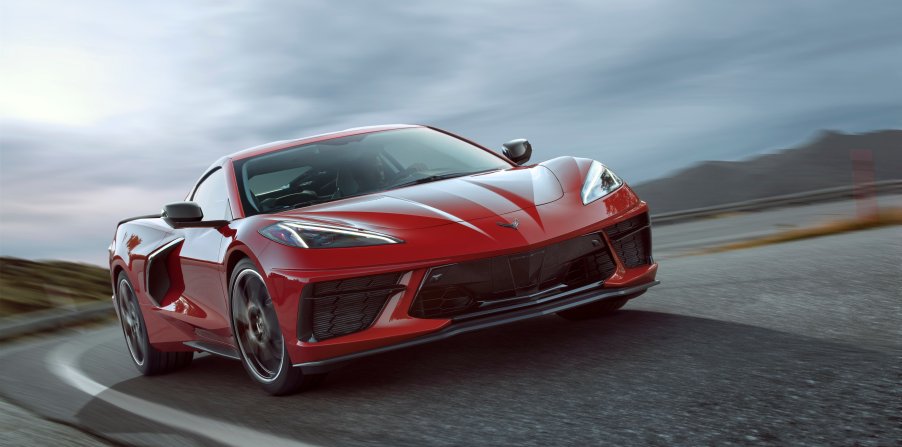
Why Won’t the Mid-Engine Corvette Get a Manual Transmission?
The 2020 Corvette Stingray is the first of its kind for many reasons. It’s the first Corvette to feature a mid-engine design, left and right-handed steering capabilities, and an improved oil system to maximize fuel capacity. Another difference that separates the Stingray from other Corvette models is the addition of a dual-clutch transmission. Drivers got a taste of how a Corvette would feel with an eight-speed transmission in 2015, but now there’s no stick to be found in the Corvette’s interior.
While some Corvette fans were still holding out for at least the option to have a manual transmission, it’s a lost cause at this point. Tadge Juechter, the company’s chief engineer, has confirmed that there will be no manual gearbox in the Corvette’s future. It’s not just for improved aesthetics: according to Juechter, the building of manual transmissions is becoming obsolete in the automotive industry.
Some customers may not even bat an eye at the change of transmission, but it’s heart-wrenching news for fans of the stick. The nostalgic factor of learning how to “row your own gears” is something that can’t be replicated. There are still plenty of cars that drivers can purchase if they can’t live without a stick shift, but the newest Corvette will never be one of them. There are a few reasons why manual transmissions are quickly becoming phased out.
Decreasing Popularity
Juechter stated that only 15% of the C7 Corvettes had manual gearboxes, with less demand every year. Manual transmissions may have a dedicated set of supporters, but these are becoming the minority. Porsche found that using a manual transmission in its GT3 to be a successful venture, though Juechter made it clear that the Corvette won’t be going down that route.
Higher Costs
Manual transmissions are more expensive to develop than dual-clutch or automatic transmissions. It’s hard for a car company to justify developing a manual transmission just to satisfy long-time fans if it knows selling the cars will be more difficult. Because of this, the production of manual transmissions is starting to become known as a “dying industry”.
No Room in the Cabin

In some cases, such as the newest Corvette, the addition of a manual transmission just wouldn’t mesh well with the car’s interior design. The current placement of the shift buttons only takes up a tiny space in the cabin, leaving developers with little room to install a stick. While it’s certainly possible to add an old-school gearbox to the Stingray, Chevrolet doesn’t see it being worth the effort.
While Corvette fans may be disheartened at the loss of the gearbox from previous models, that doesn’t mean that they won’t get a good deal of enjoyment out of the C8 Corvette. Its new dual-clutch transmission was designed by Tremec specifically for Chevrolet’s newest vehicle. It’s designed to emulate the physical feeling of being connected to the road without having to use a traditional stick.
With the dual-clutch transmission comes an unrivaled boost of power. The 2020 Corvette will be able to accelerate from 0 to 60 in less than three seconds, something that likely couldn’t be accomplished with a standard manual gearbox. The first gear gets the car off the ground faster, leaving gears two through six to keep it operating at the highest performance throughout any drive. The seventh and eighth gears are designed for maximum fuel-efficiency and minimal mechanical strain.
Dual-clutch and automatic transmissions are quickly becoming the standard in most modern cars, and it’s part of what makes the C8 like no other Corvette before it. Chevrolet may be finished using the stick in their iconic cars, but the enhanced performance of the 2020 Corvette is a huge consolation prize.



